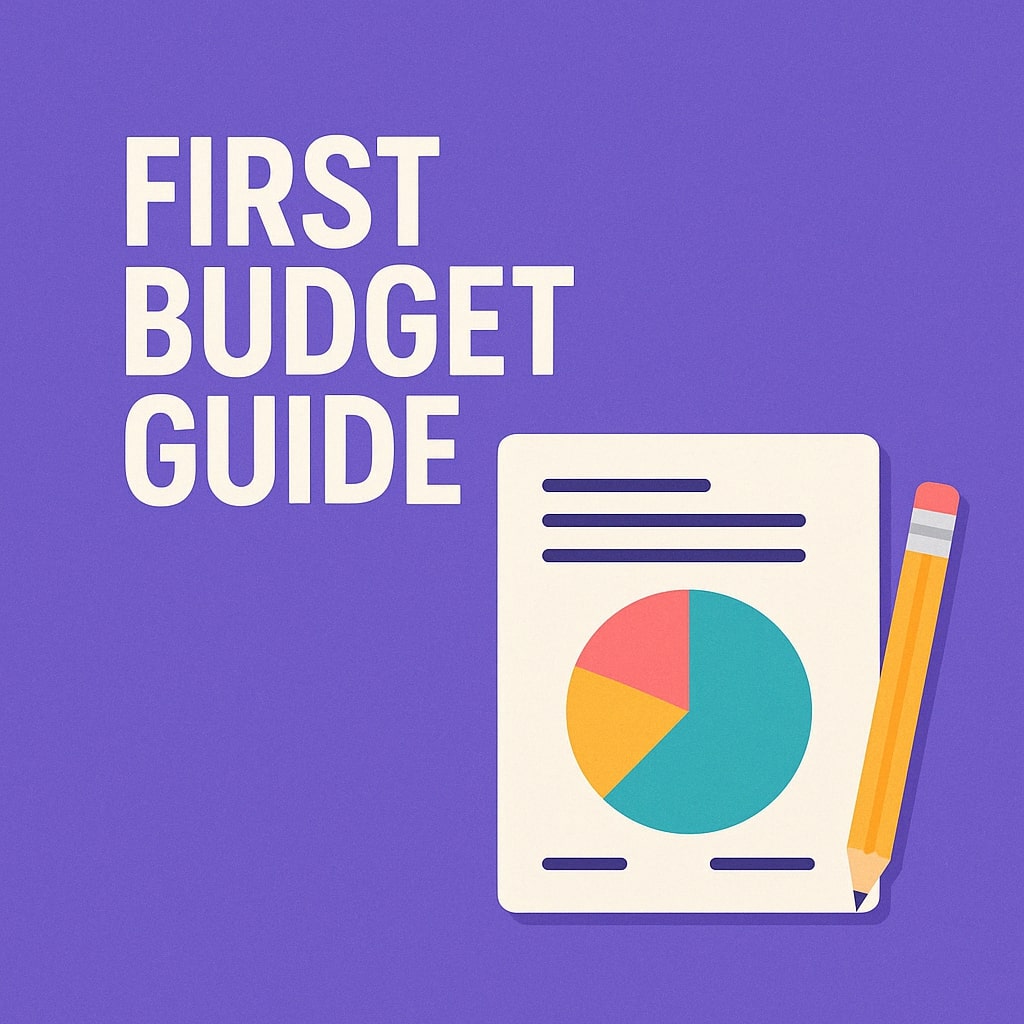Your First Real Budget: A Simple Step-by-Step Guide (No Spreadsheets Required!)

Your First "Real" Budget: A Simple Step-by-Step Guide (No Spreadsheets Required!)
Alright, let's talk about the "B" word: Budget. If hearing it makes you think of complicated spreadsheets, denying yourself every small joy, and endless number-crunching, take a deep breath. Creating your first real budget doesn't have to be scary or restrictive. In fact, it’s one of the most empowering steps you can take for your financial well-being.
Think of it less like a punishment and more like a roadmap. It shows you where your money is going, helps you direct it towards things you actually care about (like saving for that trip, a down payment, or just escaping paycheck-to-paycheck stress), and gives you control. Ready to ditch the financial anxiety? Here’s how to get started, simply.
Step 1: Know Your Income (The Real Number)
First up: how much money are you actually bringing home? We're talking about your net income – the amount that lands in your bank account after taxes, health insurance, and any other deductions are taken out. The easiest place to find this is on your recent pay stub.
If your income varies (hello, freelancers, gig workers, and tipped employees!), this takes a little more effort. Look back at the last 2-3 months, find the average, or even better, use the lowest amount as your baseline for budgeting. It’s always better to underestimate income than overestimate.
Step 2: See Where Your Money is Actually Going
This is the crucial step: awareness. You might think you only spend $100 a month on coffee, but the reality could be surprising. For a week or two, track everything.
- Use Your Bank/Card Statements: Go through your recent transactions. Most banking apps categorize spending automatically these days.
- Try a Budgeting App: Apps like Mint, Rocket Money, YNAB (You Need A Budget), or Goodbudget are designed for this. Connect your accounts (securely!), and they'll often categorize spending for you. Choose one that feels intuitive.
- Low-Tech Note: You could just jot down expenses in a notebook or phone note for a short period.
The goal isn't to judge yourself, just to get a clear picture of your current habits.
Step 3: Try a Simple Framework: The 50/30/20 Rule
Okay, you know what comes in and what goes out. Now, let's give it some structure. The 50/30/20 rule is a fantastic starting point:
- 50% Needs: Allocate about half your net income to essentials. This includes rent/mortgage, utilities (water, electricity, internet), groceries, insurance (health, car, renters), minimum debt payments, and essential transportation costs.
- 30% Wants: This is for lifestyle choices – dining out, entertainment, streaming subscriptions, hobbies, clothes shopping (beyond necessities), travel, etc.
- 20% Savings & Debt Paydown: This crucial slice goes towards building your future financial security. Think: building an emergency fund, contributing to retirement accounts (like a 401(k) or IRA), saving for specific goals (car, house), and making extra payments on high-interest debt.
Important: This is a guideline, not gospel! If your 'Needs' are higher due to rent costs, you might need to adjust the 'Wants' category. The key is being intentional.
Step 4: Adjust and Assign
Compare your actual spending (from Step 2) to the 50/30/20 targets. Are you way over in 'Wants' and barely saving? Now you can make informed decisions. Can you cut back on subscriptions? Eat out one less time per week? Redirect that money towards savings or paying down debt faster. Assign every dollar a job, even if that job is "fun money."
Step 5: Automate & Review (Briefly!)
Make saving effortless by setting up automatic transfers from your checking to your savings account right after payday. Automate bill payments when possible to avoid late fees. Then, just peek at your budget weekly or monthly. Are you on track? Does anything need tweaking? A budget isn't static; it should adapt to your life.
That's it! Your first budget is about awareness and intention, not deprivation. It’s your tool for building the financial life you want. Start simple, be kind to yourself, and enjoy the feeling of control. You've got this!
Disclaimer:
The information provided in this article is for informational and educational purposes only and does not constitute financial, investment, legal, or tax advice. The content is based on sources believed to be reliable, but the author and publisher make no representations or warranties as to its accuracy, completeness, or timeliness.
The author is not a licensed financial advisor, registered investment adviser, or broker-dealer. You should consult with qualified professionals (such as a Certified Financial Planner®, accountant, or attorney) who can assess your individual situation before making any financial decisions or taking any action based on the information presented here.
Investing involves risk, including the possible loss of principal. Past performance is not indicative of future results. Any examples or discussions of specific investments, strategies, or products are for illustrative purposes only and are not endorsements or recommendations.
Financial markets and regulations change frequently, and the information in this article may become outdated. We are not obligated to update any information herein. Your financial situation is unique, and any decisions you make should be based on your own research, due diligence, and consultation with professional advisors, considering your personal objectives, risk tolerance, and financial circumstances. Reliance on any information provided in this article is solely at your own risk.
Stay Ahead with Our Newsletter
Get exclusive financial insights, market analysis, and expert tips delivered directly to your inbox.